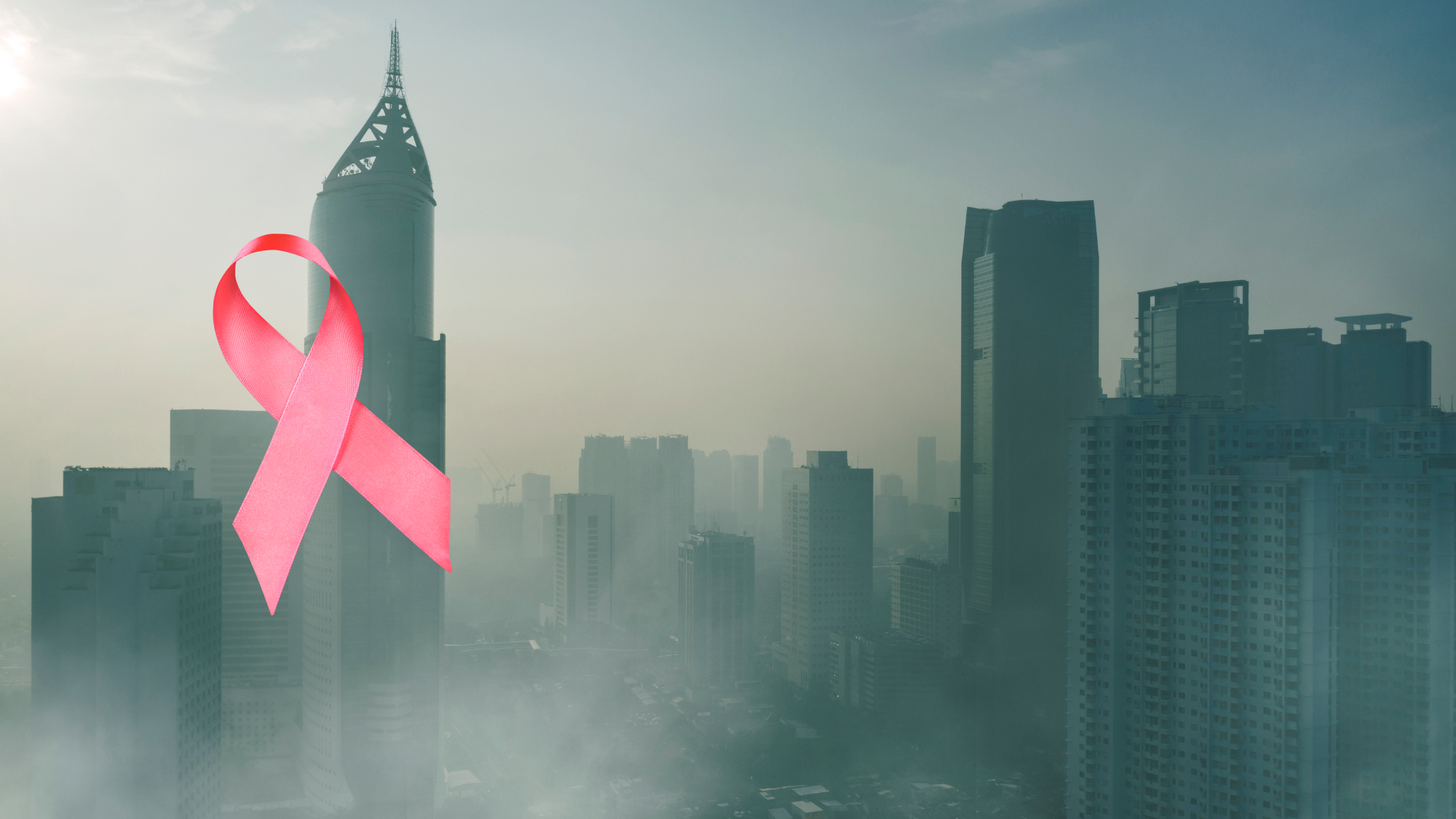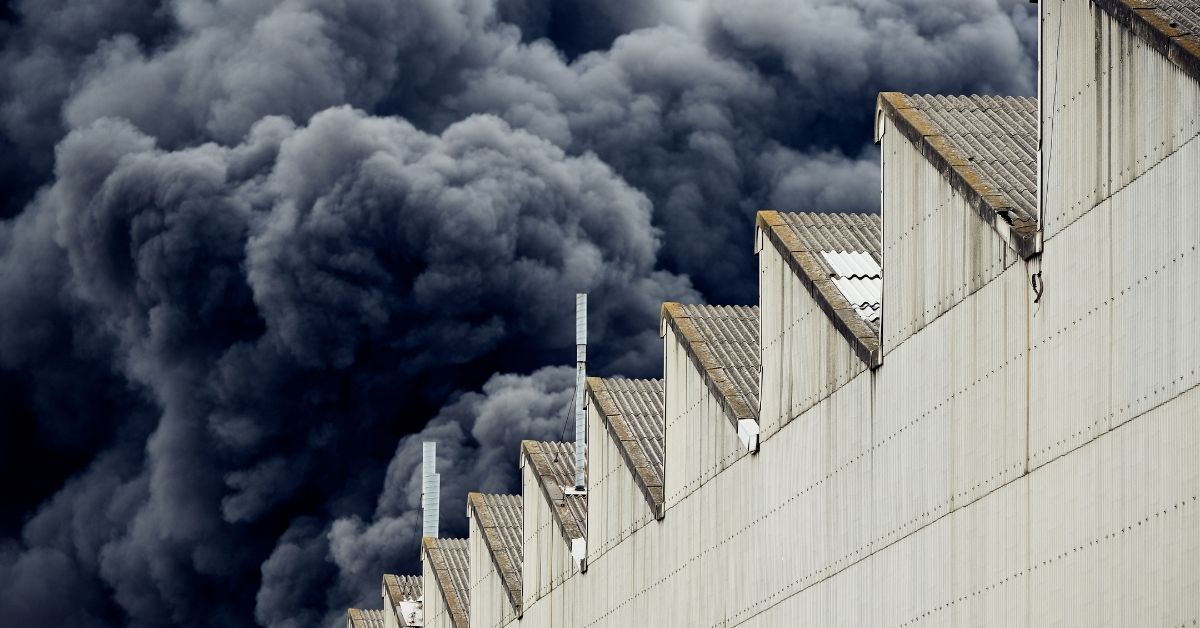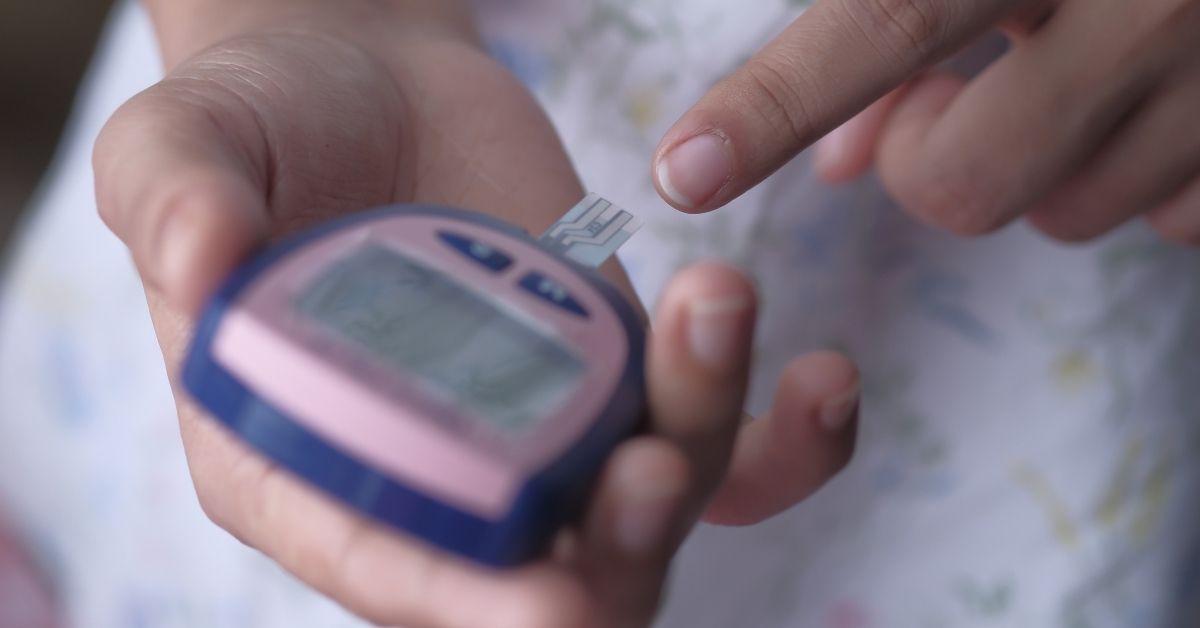October is Breast Cancer Awareness Month. But it’s not enough to just be aware. We must get involved. We must take concrete action – especially against air pollution.
Why air pollution?
Because, while breast cancer is a complex disease with multiple risk factors, recent studies have clearly shown that air quality has an impact on this disease. In this blog, we answer the top-asked questions regarding the connection between air pollution and breast cancer.
Does Air Pollution Impact Breast Cancer?
Harmful airborne substances, like fine particles, gases, and volatile organic chemicals (VOCs) come from many sources, such as vehicle emissions, industrial processes, even natural events like wildfires.
Researchers at the National Institutes of Health found living in an area with high levels of particulate pollution increases one’s risk of breast cancer. (1) This is especially true when exposed to high levels of PM2.5, or fine particles 2.5 microns or less.
Exposure to airborne contaminants, especially fine particles, can lead to inflammation, oxidative stress, hormone imbalances, and more. These factors are also linked with increased risk and development of breast cancer.
Do Hormone Disrupting Chemicals Promote Breast Cancer?
Hormones such as estrogen and progesterone are said to play a role in the growth of some breast cancers, known as hormone-sensitive (or hormone-dependent) breast cancers. (2) This is important to understand because there are airborne chemicals known as endocrine disrupting chemicals, or EDCs that can disrupt estrogens. (3) What’s more, long term exposure to PM2.5 is said to disrupt progesterone synthesis. (4) And a UK study found a significant association of exposure to PM10 with postmenopausal breast cancer risk. (5)
Is Breast Cancer Higher In Rural Or Urban Areas?
The impact of air pollution on breast cancer may vary across regions. Some studies reported stronger associations in urban areas with higher pollution levels (6), while others reported links in rural areas as well (7) (8) due to NO2 exposure.
This suggests the interplay between air pollution and breast cancer risk might be influenced by other factors, such as lifestyle, genetic predisposition, and overall health, including respiratory health.
Can You Reduce Your Risk of Developing Breast Cancer?
If we know that air pollution increases the risk of breast cancer, then it makes sense that reducing our exposure to air pollution can potentially lower our breast cancer risk. So how do we reduce our exposure?
Watch Out for High Pollution Levels Outside
Keep an eye on air quality indexes provided by local authorities, and keep watch for air quality incidents that may affect you. You can do this at www.USAirQuality.com. Limit outdoor activity during times of high pollution, and make sure you keep windows and doors closed when air pollution indexes are high.
Avoid Indoor Pollution Sources
Avoid unnecessary indoor pollution sources like smoke, harsh cleaners, scented products, etc. Many of these are considered carcinogens, meaning they are able to cause cancer.
Use Medical Grade Air Purification
For the most part, you can control the indoor air quality in your home. The most effective way to reduce indoor air pollution is with a portable air purifier. But not just any purifier.
According to an EPA review, air purifiers that use a combination of Certified HEPA Material and carbon are most effective. The Austin Air HealthMate Plus uses up to 15 pounds of activated carbon and zeolite, a blend specifically designed to remove VOCs, gasses, and many chemicals that are known carcinogens.
It also contains 60 square feet of true, medical-grade Certified HEPA Material to capture fine particulate matter as well as viruses, pollen, dander, bacteria, mold, and more.
References:
- https://dceg.cancer.gov/news-events/news/2023/particulate-air-pollution-breast-cancer-risk#:~:text=%22We%20observed%20an%208%25%20increase,%22%20said%20Alexandra%20White%2C%20Ph.
- https://www.cancer.gov/types/breast/breast-hormone-therapy-fact-sheet#:~:text=Progesterone%20plays%20a%20role%20in,hormone%2Ddependent
- https://www.ncbi.nlm.nih.gov/pmc/articles/PMC7731392/
- https://www.sciencedirect.com/science/article/pii/S0160412021001082#:~:text=An%20experimental%20study%20has%20shown,trophoblast%20cells%20
- https://breast-cancer-research.biomedcentral.com/articles/10.1186/s13058-023-01681-w
- https://www.ncbi.nlm.nih.gov/pmc/articles/PMC6867190/#:~:text=Ecologic%20studies%20suggest%20that%20breast,reviewed%20by%20White%20et%20al.
- https://www.ncbi.nlm.nih.gov/pmc/articles/PMC9913524/
- https://edu.rsc.org/science-research/nitrogen-dioxide-is-a-pollution-problem-in-rural-areas/4016977.article#:~:text=The%20duo%27s%20major%20findings%20were,and%20rural%20NO2%20emissions.



